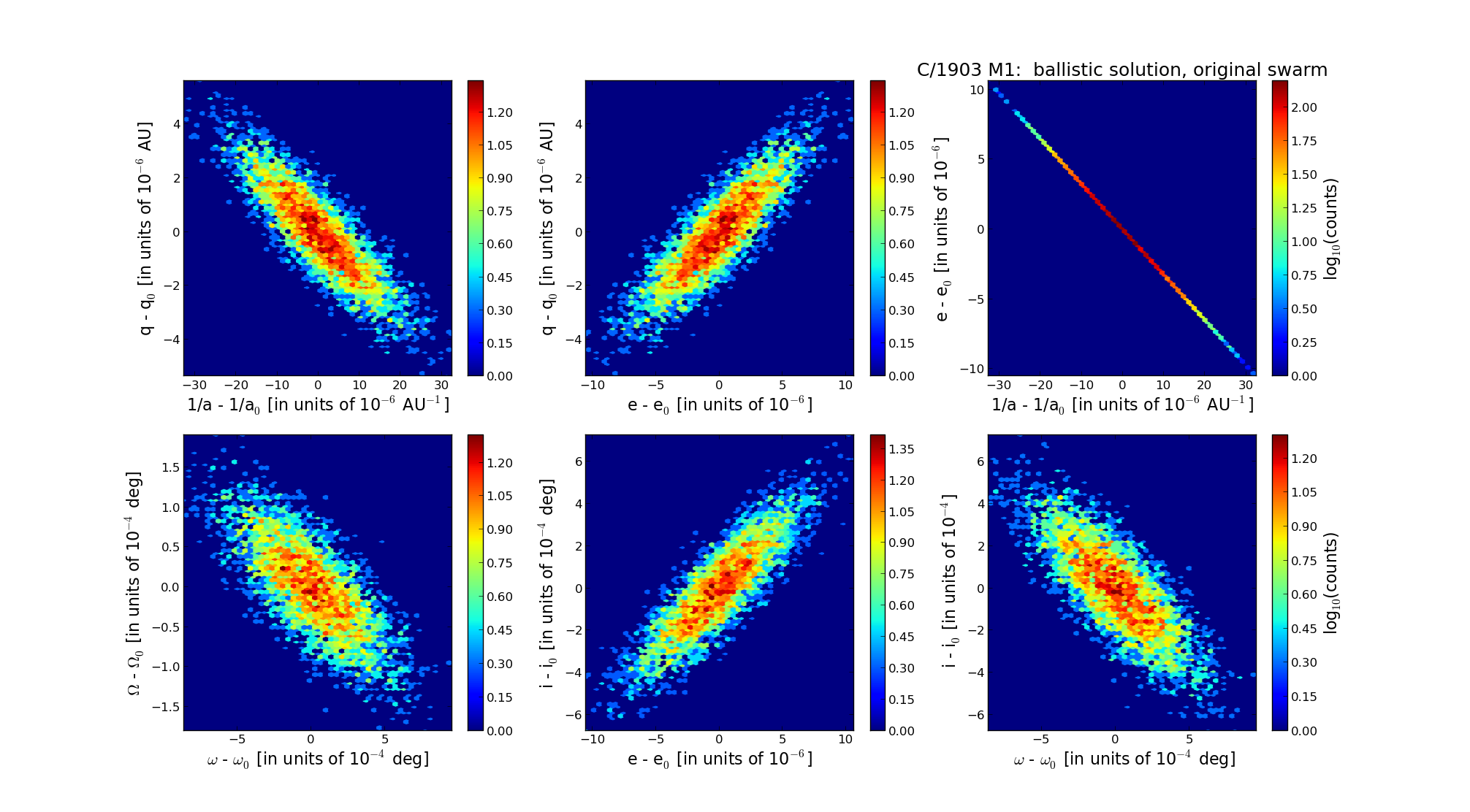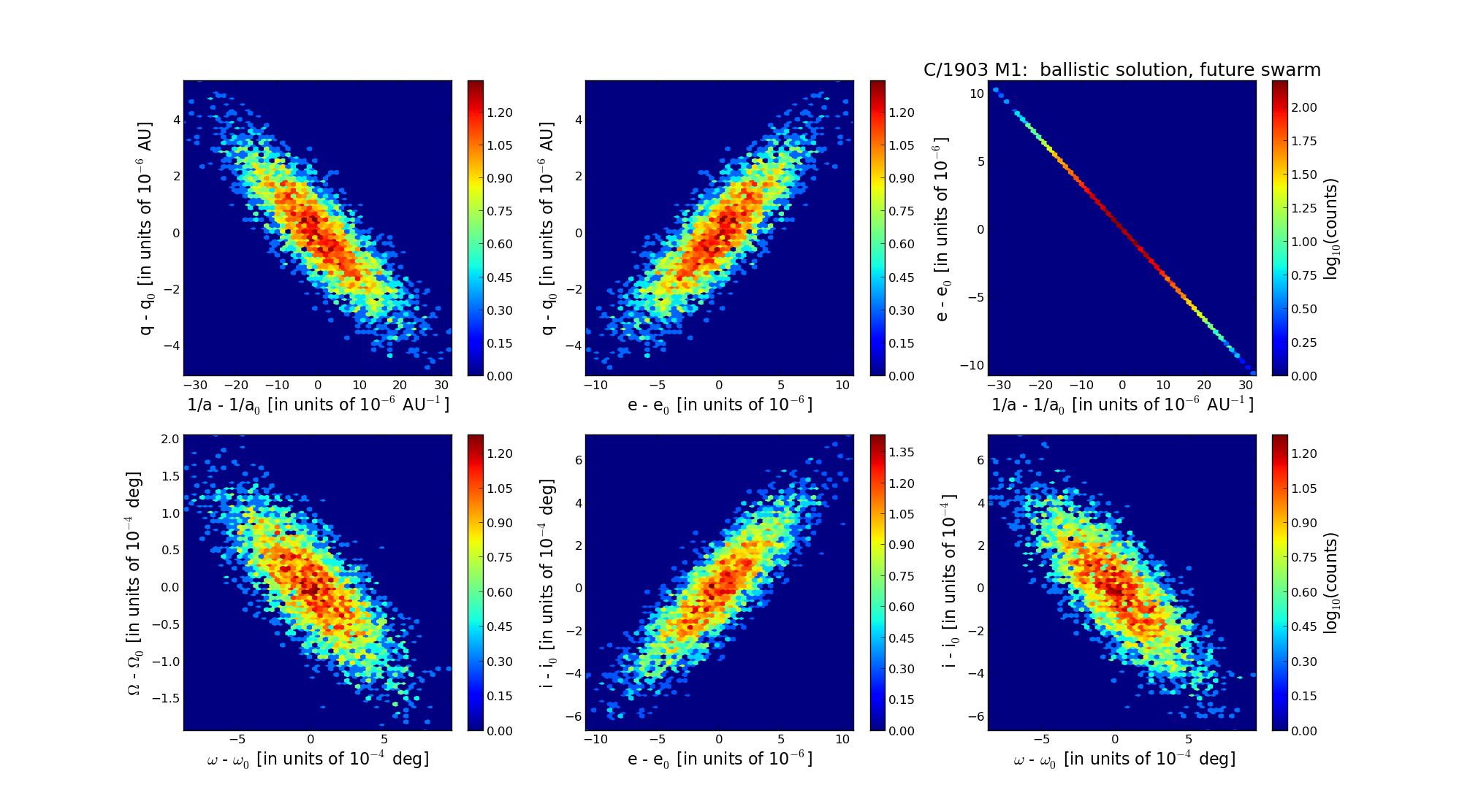| Solar System Dynamics & Planetology Group |
 |
C/1903 M1 Borrelly |  |
| Solar System Dynamics & Planetology Group |
 |
C/1903 M1 Borrelly |  |
| number of observations | 653 |
| number of residuals | 1021 |
| data interval | 1903 June 24 — 1903 Oct. 23 |
| rms [arcsec] | 2.03 |
| orbit quality class | 2a |
| Epoch (TT) | 19030903.0 | = JD 2416360.5 |
| time of perihelion passage (TT) | 19030828.108377 | ± 0.000058 |
| perihelion distance | 0.33018087 | ± 0.00000150 |
| eccentricity | 1.00040917 | ± 0.00000310 |
| argument of perihelion [deg] | 127.251980 | ± 0.000260 |
| longitude of the ascending node [deg] | 294.909653 | ± 0.000054 |
| inclination [deg] | 85.015231 | ± 0.000197 |
| inverse semimajor axis [10-6 au-1] | -1239.23 | ± 9.40 |

| Epoch (TT) | 16060611 | |
| time of perihelion passage (TT) | 19030826.871477 | ± 0.000043 |
| perihelion distance | 0.32438523 | ± 0.00000159 |
| eccentricity | 0.99999218 | ± 0.00000310 |
| argument of perihelion [deg] | 127.495100 | ± 0.000266 |
| longitude of the ascending node [deg] | 294.778173 | ± 0.000054 |
| inclination [deg] | 85.303818 | ± 0.000202 |
| inverse semimajor axis [10-6 au-1] | 24.12 | ± 9.55 |

| Epoch (TT) | 21900120 | |
| time of perihelion passage (TT) | 19030828.359623 | ± 0.000136 |
| perihelion distance | 0.33314041 | ± 0.00000153 |
| eccentricity | 1.00033647 | ± 0.00000318 |
| argument of perihelion [deg] | 127.333709 | ± 0.000266 |
| longitude of the ascending node [deg] | 295.030879 | ± 0.000058 |
| inclination [deg] | 84.934214 | ± 0.000200 |
| inverse semimajor axis [10-6 au-1] | -1010.01 | ± 9.55 |